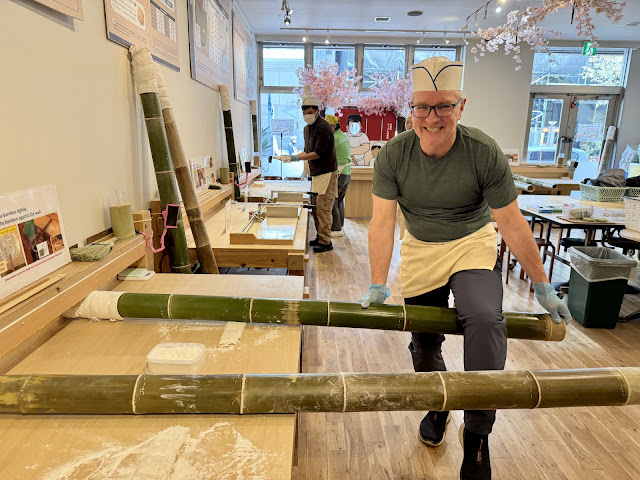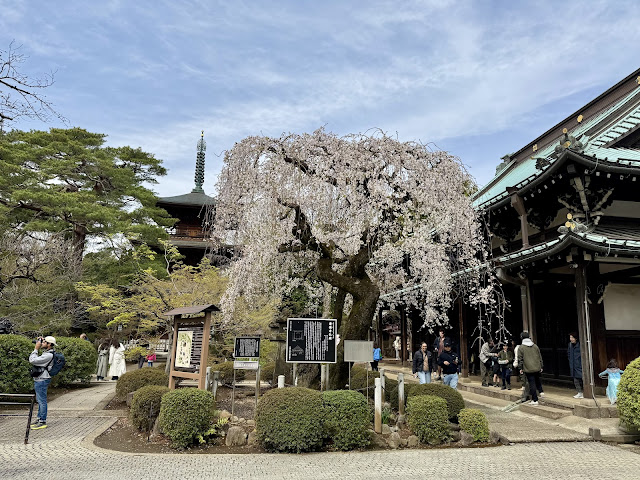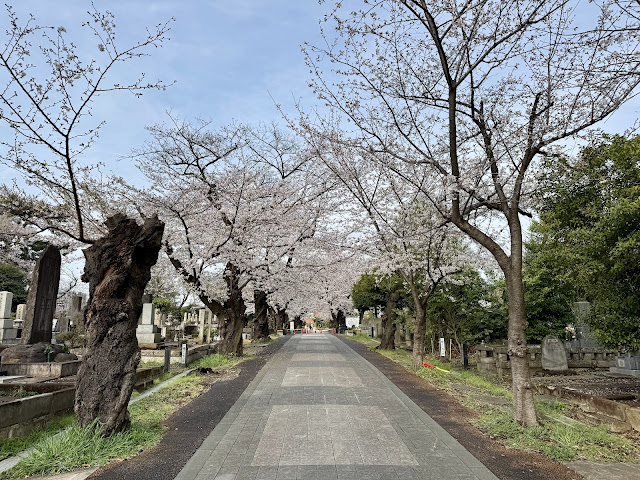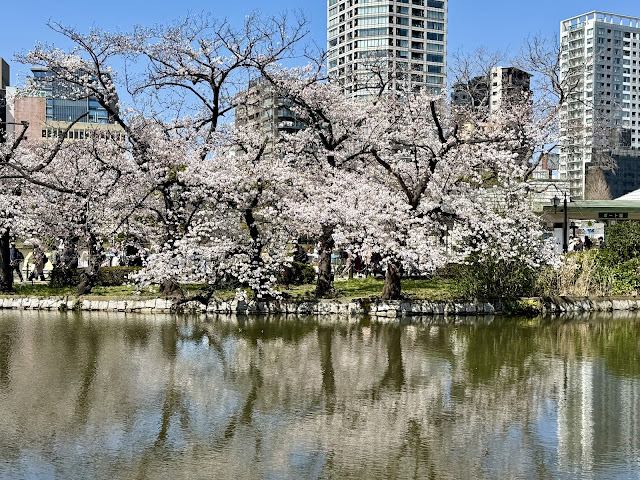To get ready for this year's trip to Japan, I read Will Ferguson's Hokkaido Highway Blues: Hitchhiking Japan, a late 1990s account of the author's quest to hitchhike all the way from Kyushu to Hokkaido while following the blooming of the cherry blossoms (or sakura) from south to north of the country. Appropriate, right? I mean, we went to Tokyo this year to see the sakura, although admittedly without the hitchhiking.
No hitchhiking on vacation. Except in Germany. And then only once. And it really wasn't hitchhiking. I was offered a ride and I accepted.
At one point in the book, Will gets arrested (hitchhiking is illegal in certain places in Japan like on highway entrance ramps) and taken to a police station where he is ultimately released with a written warning which he is required to sign. Will's account of that simple signature act in his book reads as follows:
The older officer typed out an arrest report on his word processor, gave me a copy, and asked me to sign it. When I pulled out an inkan instead, he raised an eyebrow. The Japanese do not sign things. When they formalize an agreement, cash checks, draw up contracts, or hand in office reports, they use inkans, little sticks with their names carved on one end. They use these to stamp their imprint on the paper in red ink. Some are made of cut stone, or even ivory, but most inkans are plain bamboo.
Whoa. Whoa! Whoa!! Whoa!!! WHOA!!!! What is this? An inkan? What??? Never heard of one of these before but I definitely for sure absolutely need one for my own. I mean, I HAVE to have one. They still make these things, right?
Checks internet immediately...they do still make them.
I'm getting one.
 |
| Hanko Land, Shinagawa City, Tokyo. |
So, I know what you are thinking: where does one get an inkan made while on vacation? Don't these things take a while to get fabricated? I have a whole series of stamps that I use (or I guess "used" is a better word) to sign and seal construction documents as a professional architect and those took a week or so to come back from the stamp shop or wherever our office used to order them from after we submitted a request and payment. Can you really get an inkan while you are on vacation in Tokyo for a week?
Of course, the answer is "yes". Why would I even be writing this post if it wasn't? Inkans are sometimes called hankos (in fact, the more common name for these little personal, official seals may actually be "hanko" rather than "inkan") and if you want a hanko made up quick-like, head to Hanko Land (I mean...where else?). It's located in Shinagawa City in southern Tokyo. They make them in an hour. An hour!!!
Pick the style of hanko that you want (I will after this point just refer to these things as "hanko"s since we bought ours at Hanko Land). Pick the material. Pick the exact characters that you want to appear on your official seal and an hour or so later...BOOM! Your very own hanko.
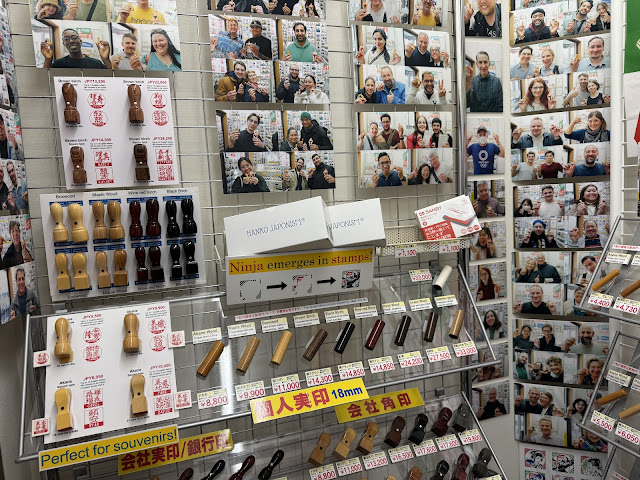 |
| Choices, choices, choices. Inside Hanko Land. |
The Japanese system of writing has no alphabet which is analogous to the English alphabet. Traditional Japanese kanji writing uses a series of symbols which correlate to specific words (so there may be a kanji character for "house" and another for "person") rather than having words made up of individual letters as we think of words being constructed in English. To accommodate new words in their language (like words imported from other languages), the Japanese have a phonetic-based writing called katakana, which allows construction of words using syllables.
I am confident I have probably butchered the meaning of kanji and katakana but that's the best way I can articulate both systems of writing. I'm hoping I'm at least 85% correct.
When it comes to getting hankos made (and let's fact it, most tourists, including me, buy these things as souvenirs), westerners usually get steered into getting a hanko made for them that spells out their first name phonetically using katakana. Sometimes, they get their English name added to the hanko so you can see the Japanese phonetic spelling and know exactly what the characters sound like. Hanko Land calls this multi-lingual hanko a dual hanko.
 |
| Hanko case and pouch... |
I didn't want that. I wanted something written solely in kanji. And to do that, I figured I'd get a hanko that represented my last name which is made up of two actual words ("hop" and "wood" if you don't know me) stacked vertically on top of one another. I did some research on the internet, found words that closely represent the words "hop" and "wood", screenshotted them from my computer and then just took them with me on my phone to Hanko Land.
It worked! The result is the cover picture of this post and the pictures immediately above and below this section.
Now, technically, I think my hanko says "jump wood" or "bounce wood" or "leap wood" since there is really no kanji character which represents "hop" as a distinct and separate action from jump or leap or bounce or spring up. I'm OK with that. We learned a long time ago (in Iceland of all places) that the English language has far more words that mean approximately the same thing as similar other words than any other language. I'm chalking this situation up to that theory. It still means Hopwood to me. I love this thing.
So what am I going to do with a small piece of maple wood bearing a kanji approximation of my last name other than keep it in its very cool carrying case with integral red ink stamp pad which fits so neatly into the embroidered fabric pouch that came free with my purchase? I don't know exactly and it doesn't really matter. I know I already said this but I love this thing. I feel like I have something exclusively Japanese even if I can't use it in quite the same way people in Japan use it.
Why I have a hanko is way less important to me than what I am going to do with it for the rest of my life. I'll find uses.
For the record, so far I've stamped every book I've read in 2025 in the upper right of the first page with my hanko and I also used it to stamp the anniversary card I gave my wife instead of signing my name. As far as I'm concerned, I never have to sign anything again, although the law of the United States and financial institutions may differ on that opinion.
 |
| ...with hanko and integral stamp pad inside. How freaking cool is this??? |
To get to Hanko Land, we took the subway to Ōimachi Station and then walked a few blocks in the rain, heads down to stay as dry as possible (this was before we bought umbrellas on this trip). When we reached Hanko Land it appeared that its storefront filled the entire width of the building we were entering so we assumed we'd be stepping into a full-size store when we slid open the entrance door and crossed the threshold.
Sliding doors in Japan are also a thing. I'm assuming it's a space issue.
What we found instead on the other side of the sliding door was a store maybe five feet deep (maybe...) with a small counter at the far end (maybe eight feet from us) with Bun Matsuzaki standing behind it. Bun is the third generation owner of Hanko Land and on a rainy Tuesday afternoon he was waiting in his store for us. He got us hooked up with what we needed (two hankos) and told us to come back in about 90 minutes and they would be ready.
I know I said earlier there's an hour turn around time but we were buying two hankos here so it's actually 45 minutes per hanko. Payment? When we come back.
We got back like right on the 90 minute dot. We ate lunch and were just ran out of other stuff to do. We hoped his time promise was good.
It was. He was ready.
Here's the hanko. Here's the case. The gold dot on the hanko is the top of the seal; the red dot is the bottom. Use one or the other to guide placement. The case is a right handed case and the part of the clasp with the grooves in it is the part you open with your right thumb. Make sure you hold it the right way up or the hanko will fall out. Need a pouch for your case? That's free. Pick one. Want to know more about Japanese printmaking? A book for that purpose is also free, along with the ability to create a couple of DIY multicolored seal pictures using part of Bun's collection (his work - making things to print - is also his hobby).
Along the way with all this, Bun asked our names, where we were from, how we found Hanko Land, what did we know about wood block printing and can he take our pictures for his wall. We told him everything, including that we knew pretty much nothing about wood block printing. He didn't mind.
We figured we'd need a spare stamp pad. That's also free. BUT...you have to play a game first and you have to win.
He reached into his back room and pulled out a toy dohyo (or sumo ring) complete with temple roof (sumo contests originated in Shinto shrines a long time ago) and four rikishi (or sumo wrestlers) with different colored wamashi (it's the belt around their waist and privates). We picked a rikishi, he picked a slightly smaller rikishi, he removed the temple roof because it would be in the way, and he showed us how to play.
The object (just like in sumo) is to toss your opponent out of the dohyo. To do that, you need to use your fingers to make the dohyo move and vibrate to topple your rival's rikishi (and likely your own). First contest? A draw. Both fell out of the ring. Second contest? We lost. Third contest? Also a loss. At which point Bun clarified that he intended to play until we won and he could give us more free stuff. Which we eventually did and he eventually did.
Stamp pad secured...we left Hanko Land for good. Although we saw Bun one more time when he ran down the street to give us some red bean paste buns. Random, I know. But the point here is he wanted us to have more Japanese culture. The buns from Bun were great.
 |
| The toy dohyo. Note the containers for water and salt in the corner of the toy, just like in a real tournament. |
But what we also got was a crash course in Japanese printmaking and a glimpse into Japanese toy making history that we could not honestly have found anywhere else in the city if we had looked for it. Meeting Bun was an extraordinary experience. I highly recommend anyone going to Tokyo and wanting an authentic, personalized Japanese souvenir head to Hanko Land for a hanko (or inkan). What you will get is so much more than what you will pay for.
I am super thrilled with my hanko. But I'm way more thrilled that I got to spend 20 minutes or so with Bun-san learning from him about everything he told us. I hope the picture of us turned out just great and he's got us up on his wall along with a bunch of other past customers from what looks like all over the world. Now I just need to find more uses for this hanko. I'm going to need that spare stamp pad at some point.
 |
| Me and Bun-san. With the winning and losing rikishi. |











